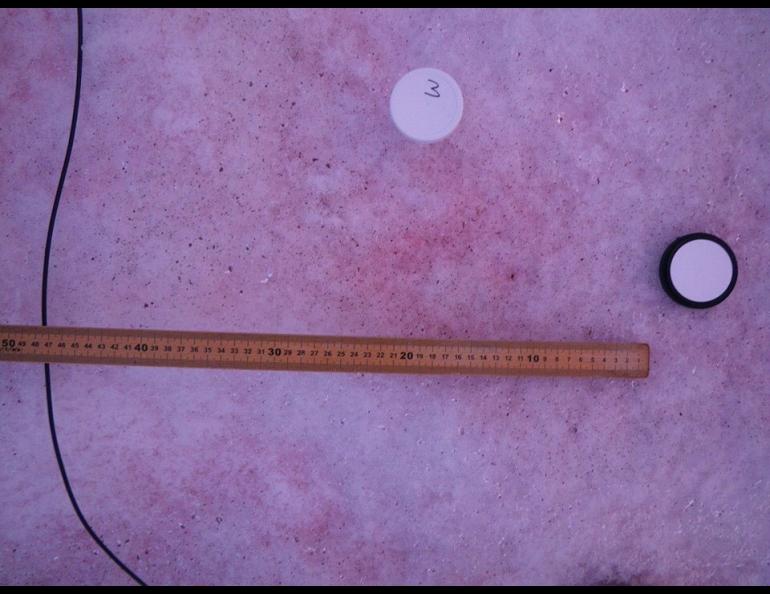


Algae’s athletic role in glacier melt
Life exists everywhere you look. Even on glacier ice, home to inch-long worms, snow fleas, bacteria and algae.
When gathered by the millions on the ice, algae cells can help make the water they need to survive. Alaska scientists recently studied this living agent of glacier melt.
“If you went to a place on a glacier and scraped the algae away, about 20 percent of the melting would go away,” said Roman Dial, a biologist at Alaska Pacific University. He is co-author on a recent study executed in summer 2014 on Harding Icefield by then APU graduate student Gerard Ganey.
Ganey and his helpers traversed the steep Exit Glacier Trail near Seward about a dozen times that summer in his study of algae that lives on ice. In the research published in Nature Geoscience, Ganey found that adding fertilizer to glacier ice increased the amount of nearby algae. More algae absorbed more sunlight, equating to 17 percent more glacier melt in areas rich in algae.
Green algae cysts are single-celled packages now waiting out the long winter on Alaska glaciers. They break their dormancy in spring when tickled with meltwater.
When spring warmth delivers free water, algae swim to the glacier surface using tiny flagella whips. Then algae lose their ability to move and morph from green to red. Red seems the perfect color to absorb just the right amount of heat from the sun to thaw nearby snow without the algae getting too hot and dying. A frigid glacier without water would host no living creatures.
“All life needs liquid water,” said Dial, Ganey’s advisor at APU. “When you go camping and your water bottle is frozen, you’re going to be thirsty until you get your water bottle thawed out.”
Ganey enlisted members of the APU ski team to visit his field site on Harding Icefield, a broad plain of ice on the Kenai Peninsula with starfish tendrils of glacier reaching down to the sea.
Ganey did his research without helicopter or fixed-wing aircraft support. He and his partners used skis for the three-mile transit to his field site once he reached glacier ice. At his study area with its “wilderness feel,” Ganey, 32, would ski a triangular path to his different ice treatment methods. He added fertilizer and water to enhance algae growth in some spots, added bleach to inhibit algae at some others, and did nothing to a control plot.
Dial thinks Ganey’s muscle-powered research had a lot to do with him winning the Alaska Wilderness Classic with partner Todd Tumolo later that summer. The backcountry route took competitors from Thompson Pass in the Chugach Mountains to the McCarthy Road. The race required travel over glaciers and packrafting on glacial rivers.
Ganey agreed that his fieldwork set he and Tumolo up for success in the August 2014 race.
“It was my primary training so I’d have to say it contributed,” he said. “(Tumolo) is a Denali guide and came off the mountain in good shape, and I came off the icefield in good shape. We were kind of prepared to blast through that.”







